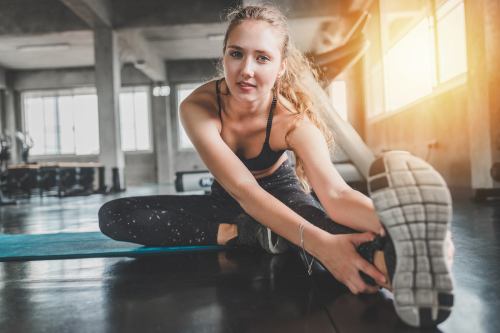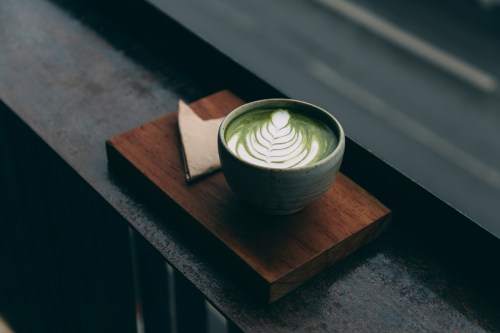You know the feeling—you’re in the middle of a HIIT class and your foot starts cramping up after a round of squat jumps. What gives, right? Not only is it pretty uncomfortable to have to deal with in the moment, there’s also the matter of needing to get through the rest of the workout without totally having the rest of your body overcompensate for you.
And honestly, you wouldn’t be alone to question why exactly your feet cramp up in the first place. According to experts, there’s not just one blanket reason that it happens, so being well versed in its causes can help you think on your toes if the time ever arises. Here are a few reasons why it’s so common when training to get foot cramps and what you can do to get rid of it fast and get back to kicking butt in your workout.
Your arches aren’t supported
If you’re wearing worn-out sneakers that don’t work well for your feet and arches, you might be missing the support needed to roam around on your feet with ease. “Most cramping is from a functional problem. Usually the arch of the foot is not being supported enough and the small muscles and ligaments are being overworked,” says Dana Canuso, MD a pediatric surgeon. This causes fatigue and then cramping within the foot.
No matter what type of arch you have, your shoes should have some sort of support to hold them up or keep them from falling, she says. “If shoes are worn or not fitting correctly, the arch will not be supported and the feet may pronate, leading to fatigue and cramping,” she says. You can also wear socks that offer compression in the arch, which can help increase blood flow and prevent pronation, she adds. And FYI—that means don’t ever exercise barefoot, she says. If you are, don’t jump while barefoot, which will agitate your feet and can lead to pain and cramping.
You have flat feet
If you have over-pronation naturally in your foot, which is basically a flattening of the arch, you’re more likely to cramp up in general, so getting the right shoes and learning how to train despite such tendencies will help you avoid cramping as best as possible. You might want to get insoles or orthotics in your shoes to offer additional support. And when purchasing shoes, look for a few features that’ll work best for people with lower arches and flat feet. “Look for shoes that have minimal twist when you hold the toe and the heel,” she says. Also, check if the sneakers have a supportive insert. Shoes that are too heavy can also cause cramping.
You’re dehydrated
If you’re dehydrated and depleted of electrolytes, like sodium, potassium, and magnesium, you might experience cramping in all parts of the body—the legs, arms, and feet. “It all comes down hydration and making sure that you have a good fluid balance (meaning both water and electrolytes). The key to keeping cramp-free during workouts is to make sure you’re drinking enough water before, during, and after your workout,” says Meredith Fritz, CPT, Studio Three Interval Instructor and General Manager. “When we become dehydrated our bodies can’t bring fluids to our muscles as easily, especially during exercise. Every time we run, cycle or move our bodies in a way that our muscles are contracting we need more water.” When there’s prolonged contraction, without enough replenishment, it can cause cramping.
Drink throughout the day (if you’re a morning exerciser, drink a glass or two before working out) and keep enough water or sports drink on hand during your workout to prevent it from happening. If you find yourself having a difficult time drinking enough water, there are great low-sugar electrolyte tablets that you can add to your water to make it taste better and help you stay hydrated, she suggests.
You don’t stretch your feet enough
It’s not enough to stretch your calves and back after a workout—you need to take time to care for your precious feet, too. You should be stretching and massaging them regularly. You can try at night when you’re off your feet. “Recovery exercises are wildly important to keeping us going day after day. Schedule time to foam roll your legs, calves, and feet before and after every workout to make sure your body is ready to perform to your best level,” says Fritz.
If you are sitting at a desk all day, a great tip is to roll your feet out under your desk with a tennis ball or lacrosse ball, Fritz suggests. Stretch your feet and calves mid-workout if you cramp up, too, she adds. “When you are feeling your feet cramp up, you will want to actively lengthen the muscle by performing some easy stretches,” she says. Stand six inches from a wall and place your toe on the wall in front and your heel on the floor. Actively bring your body towards the wall until you feel a stretch in your calf and foot. The muscles in your feet and calves are connected, making it important to stretch both, she explains.
Try these quick fixes
If you do end up with cramped feet, you can act fast. The quickest way to get rid of it is to stretch the feet and take a walk, says Canuso. Even just a short walk down the hallway of the gym might help or around your area in a workout class. Massage the area with foot lotion if possible and stretch your feet with your hands or a towel if you can take a short break. Additionally, you can try a heating pad and applying direct pressure to the area of the cramp, holding it there until the pain eases. You can also try jumping and pointing and flexing the toes to see if it helps, she adds.
Speaking of feet, here’s what you can do if yours are leaving your fave sneakers stinking. Plus, why you should consider weight lifting barefoot.
Sign Up for Our Daily Newsletter
Get all the latest in wellness, trends, food, fitness, beauty, and more delivered right to your inbox.
Got it, you've been added to our email list.










